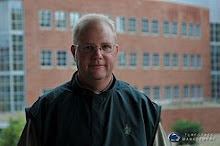
Pennsylvania State University student Josh Haugh was recently interviewed regarding the Golf Course Turfgrass Management Program. Josh came to the two year certificate program after graduating with a degree in biology then working on several local golf courses. His plan was first to attend graduate school for plant pathology, however, when funding was not available he contemplated attending the Turfgrass Management Program at Penn State in hopes of combining his love of biology and the outdoors with his passion for the game of golf.
 As Josh gets closer to his graduation from the program, he sat down with me to reflect on some of the memorable moments he experienced both here on campus and at Whistling Straits where he did his internship. Josh came to Penn State simply because it offers the best turfgrass science education in the country. Penn State’s Golf Course Turfgrass Management Program is
As Josh gets closer to his graduation from the program, he sat down with me to reflect on some of the memorable moments he experienced both here on campus and at Whistling Straits where he did his internship. Josh came to Penn State simply because it offers the best turfgrass science education in the country. Penn State’s Golf Course Turfgrass Management Program is  known around the world as being a leader in educating the best and brightest turfgrass managers. Having the largest turfgrass science alumni base in the world provides a wonderful support system as well as networking opportunities that no other school can match. Classes are taught by world class teachers and researchers, many of whom have practical golf course experiences, in areas that include: turfgrass pathology, soils, botany, weed and insect management as well as business, communication, accounting, and human resource
known around the world as being a leader in educating the best and brightest turfgrass managers. Having the largest turfgrass science alumni base in the world provides a wonderful support system as well as networking opportunities that no other school can match. Classes are taught by world class teachers and researchers, many of whom have practical golf course experiences, in areas that include: turfgrass pathology, soils, botany, weed and insect management as well as business, communication, accounting, and human resource  management. The program also requires each student to spend six months doing an internship where they receive real world experience. Combining the knowledge from the classroom with the practical day-to-day responsibilities and challenges encountered on the golf course is the perfect turfgrass science education. Brimming with confidence, Josh only sees good things in his future and the future of the turfgrass industry. He will never forget that it all started at Penn State University.
management. The program also requires each student to spend six months doing an internship where they receive real world experience. Combining the knowledge from the classroom with the practical day-to-day responsibilities and challenges encountered on the golf course is the perfect turfgrass science education. Brimming with confidence, Josh only sees good things in his future and the future of the turfgrass industry. He will never forget that it all started at Penn State University. 














